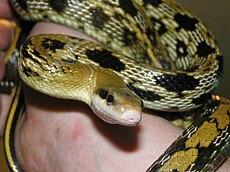"Brumation is a term used for the hibernation-like state that cold-blooded animals utilize during very cold weather. On the other end of the spectrum is a state known as aestivation, which like brumation, provides a way for reptiles to handle temperature extremes." - google define
"Brumation is an example of dormancy in reptiles that is similar to hibernation. It differs from hibernation in the metabolic processes involved.
Reptiles generally begin brumation in late fall (more specific times depend on the species). They often wake up to drink water and return to "sleep". They can go for months without food. Reptiles may want to eat more than usual before the brumation time but eat less or refuse food as the temperature drops. However, they do need to drink water. The brumation period is anywhere from one to eight months depending on the air temperature and the size, age, and health of the reptile. During the first year of life, many small reptiles do not fully brumate, but rather slow down and eat less often. Brumation is triggered by lack of heat and the decrease in the hours of daylight in winter, similar to hibernation." - wikipedia
As a general idea, brumation is just that, as previously stated, your snake will slow down, potentially preferring the cold hide and start refusing food. This happened and is happening to my girl (November 13th) as it's getting much colder outside. The temperature inside and in her enclosure has remained constant and I haven't lowered it. She is choosing this and food is still being offered, last night it was two medium mice. I dangled with tongs, moved it around, let her smell it, etc. She just shied away and wanted nothing to do with them. So I left the mice on her feeding tray outside of the cold hide (where she currently is) and this morning they were both still there. So I repeated the process of enticing her to eat with no success. They were discarded.
As an illustration, the temperature gradient of taiwan:
and of Chicago (where I am):
While one graph is in Celsius and one is in Fahrenheit it's not hard to see that the temperature gradient month to month is about the same in both areas. With Taiwan though the average lowest low is 10 deg C (50 deg F) and the highest high is 35 deg C (95 deg F) and this plays well with captivity as the cage/enclosure temperature shouldn't ever be lower than 50 deg F or higher than 95 deg F, infact I maintain what I've mentioned in the care sheet pretty closely with variations in room temperature.
So summing it up, my snake is choosing to brumate all I can do is try and make the best of it and keep providing the proper heat gradient, clean enclosure/water, and keep providing food.






No comments :
Post a Comment